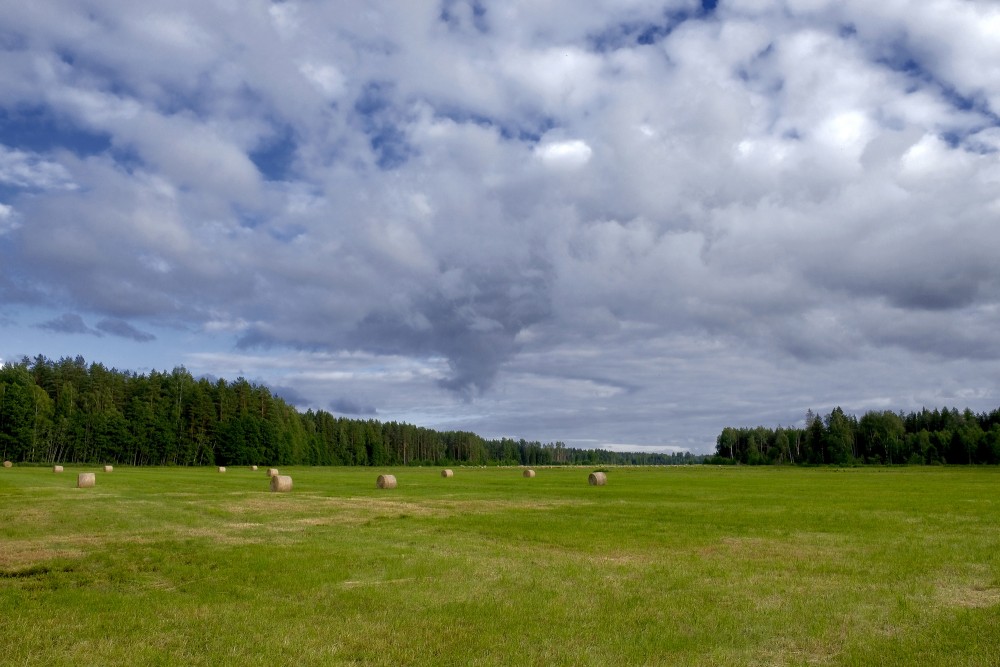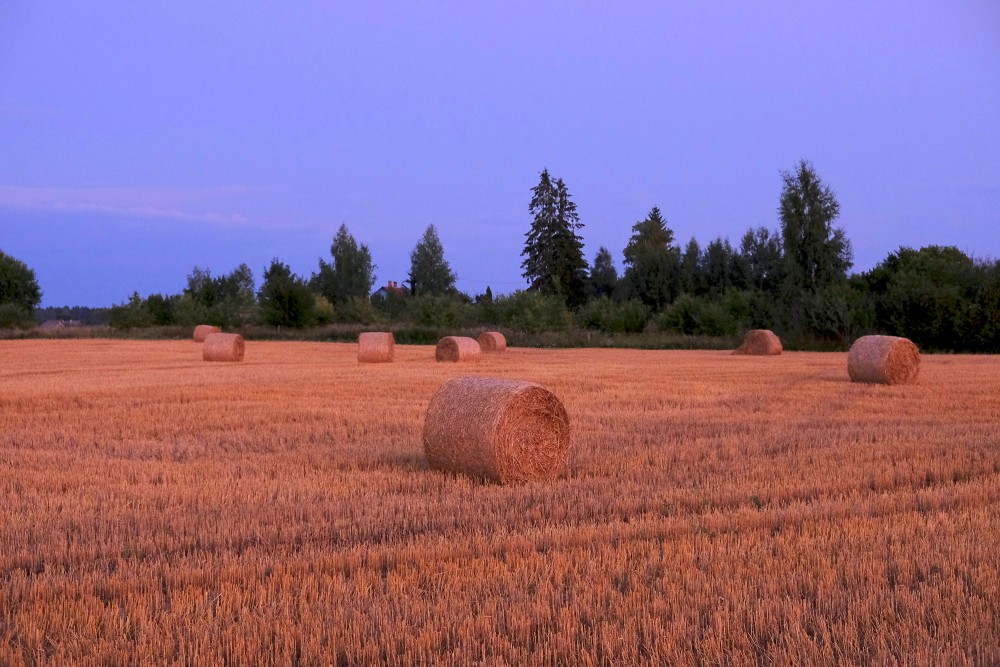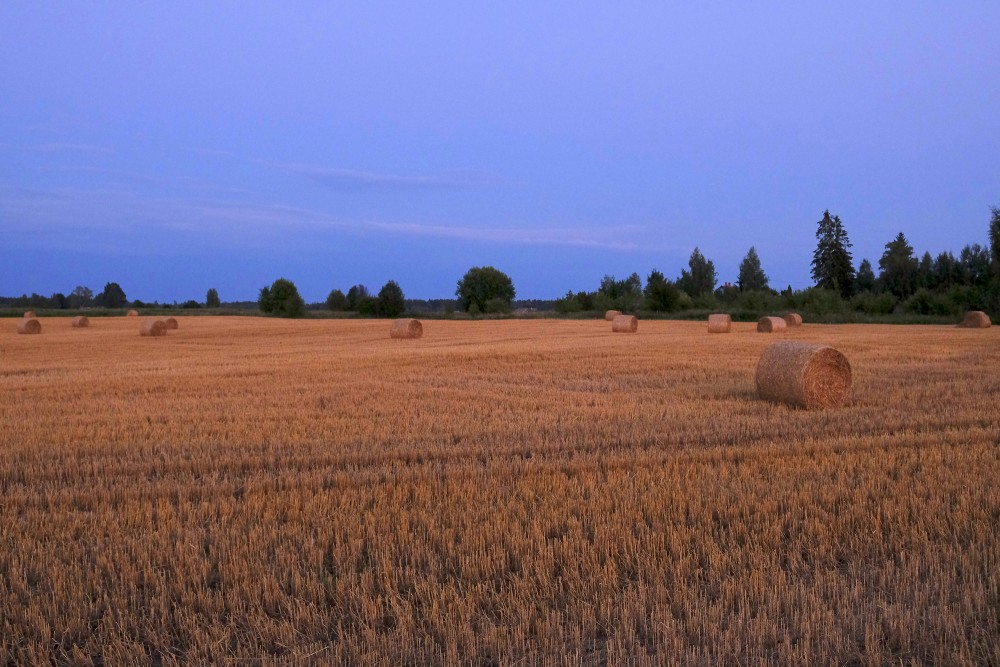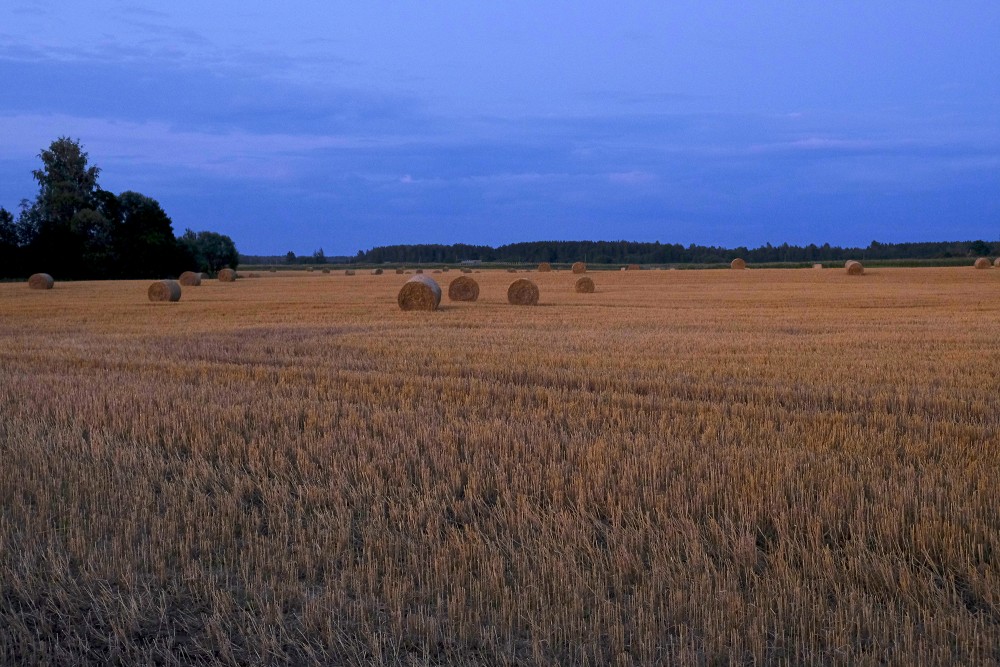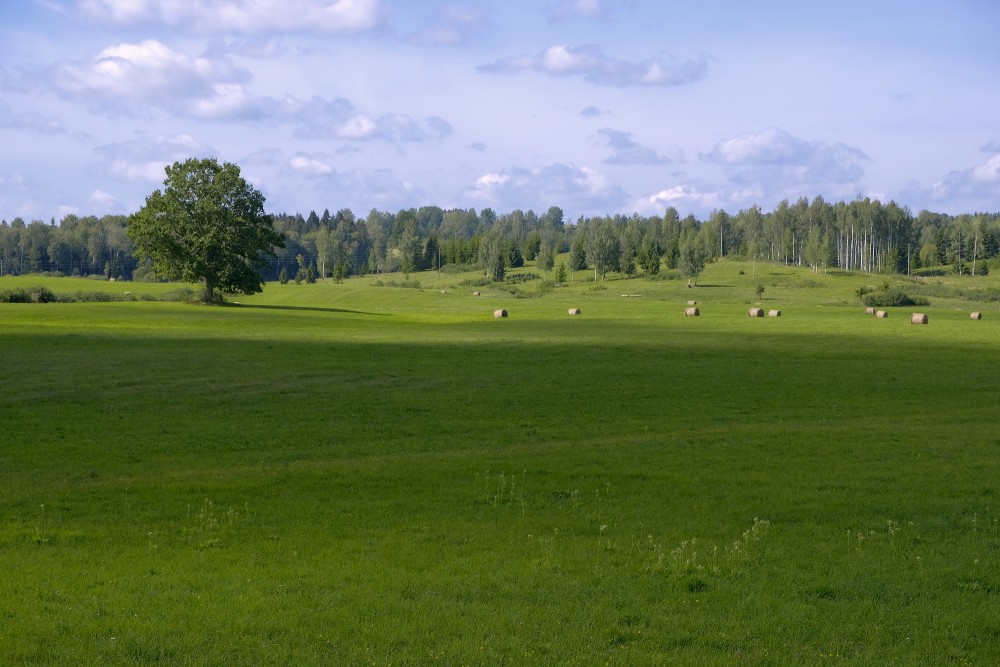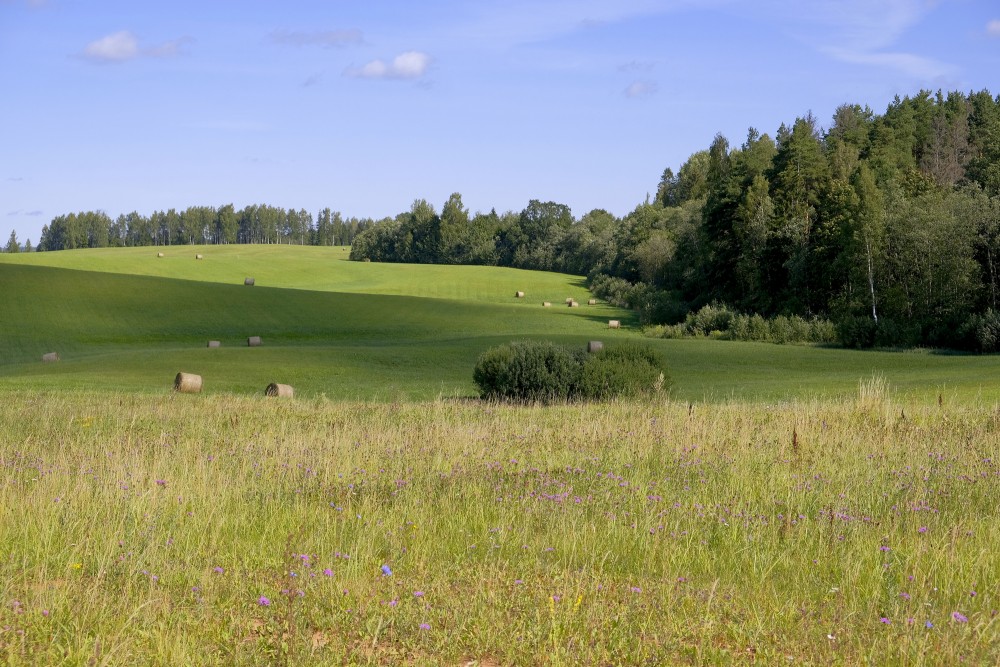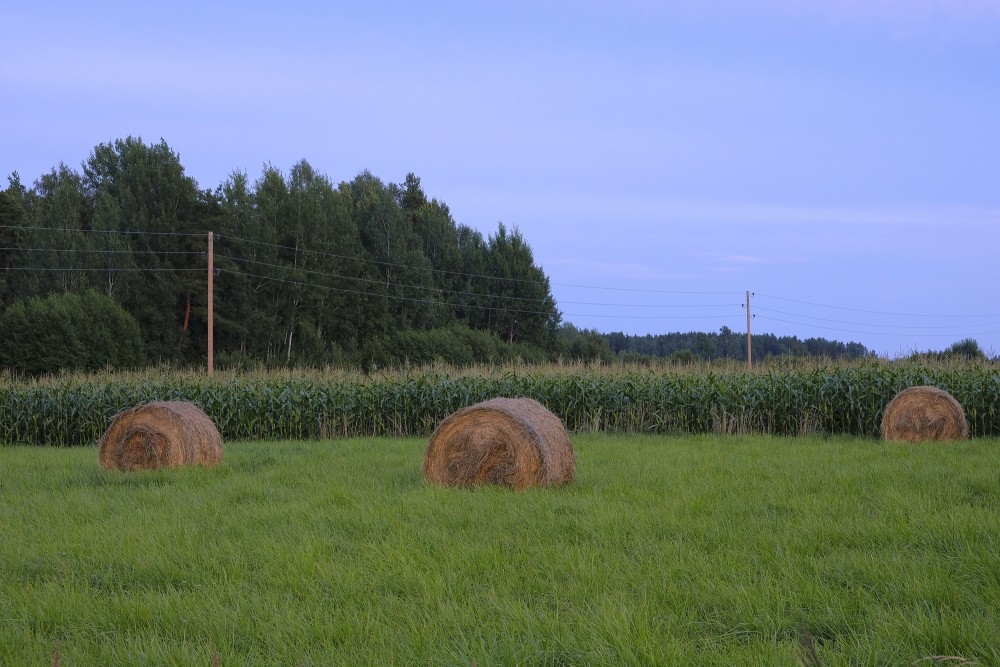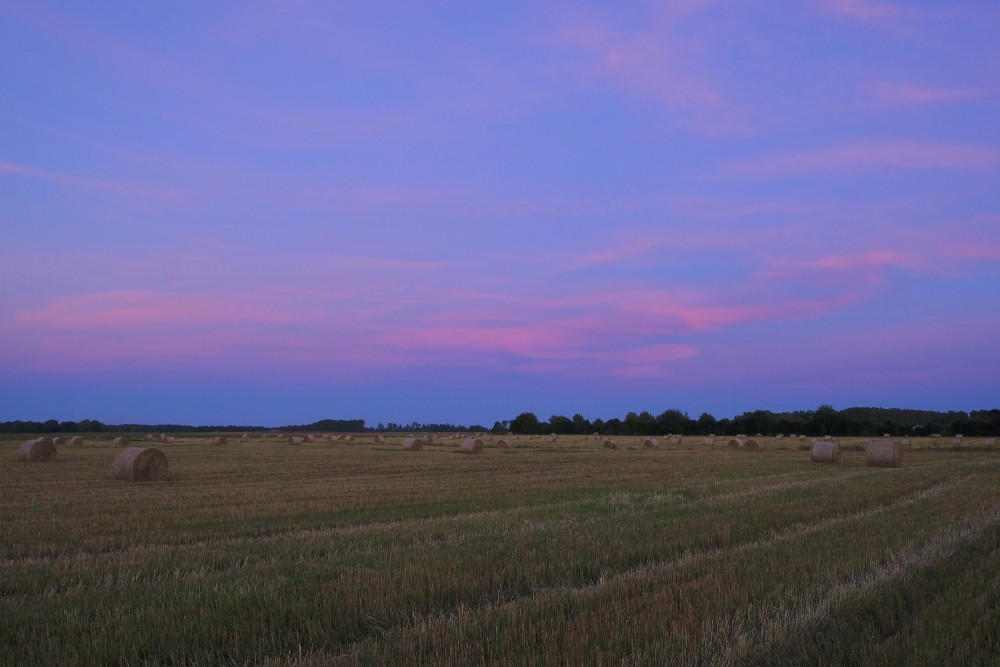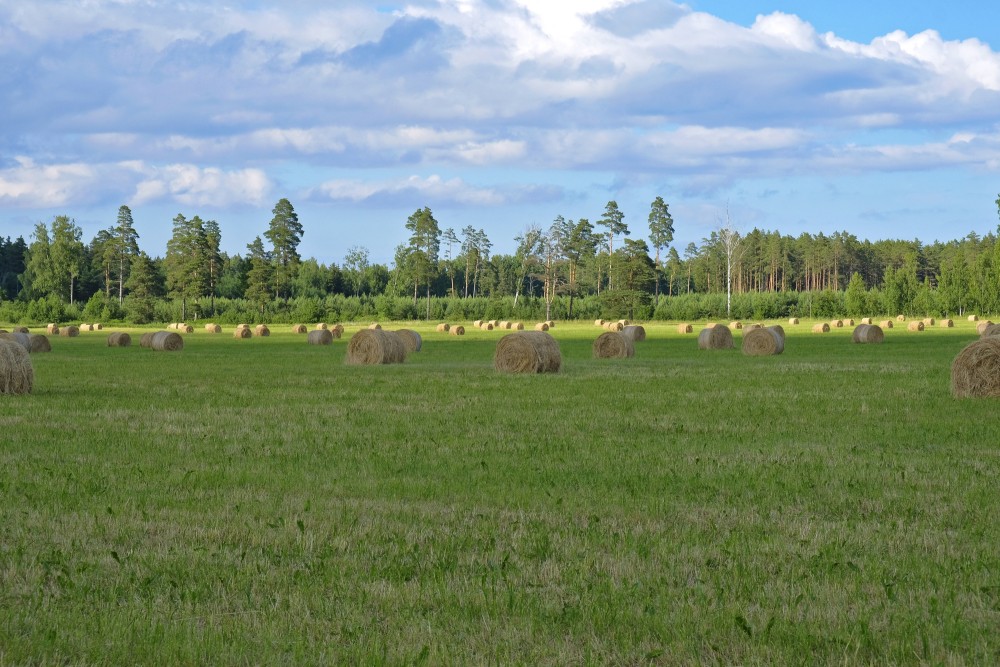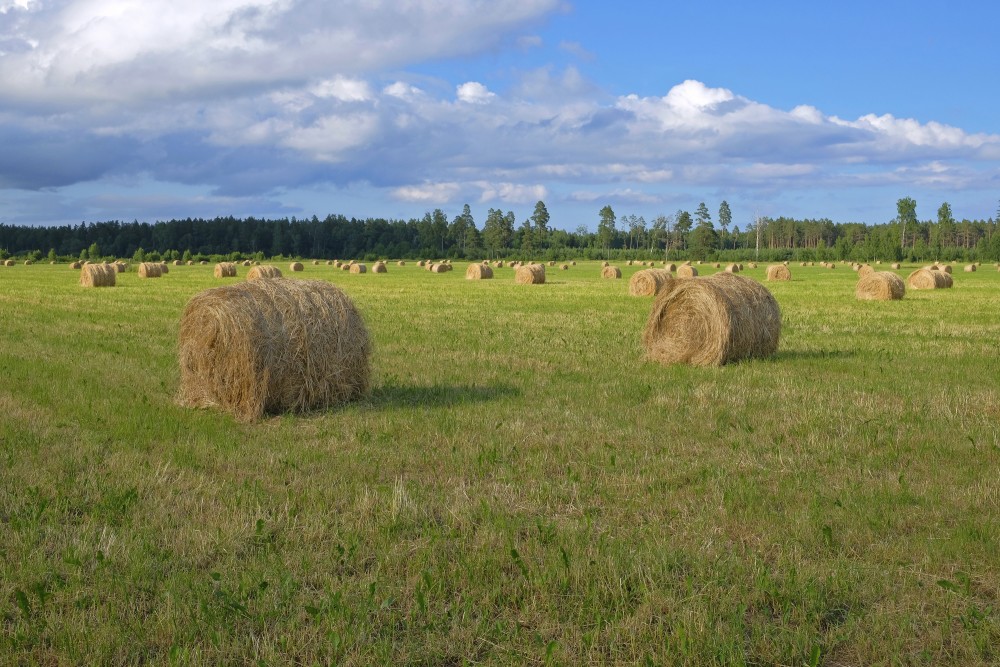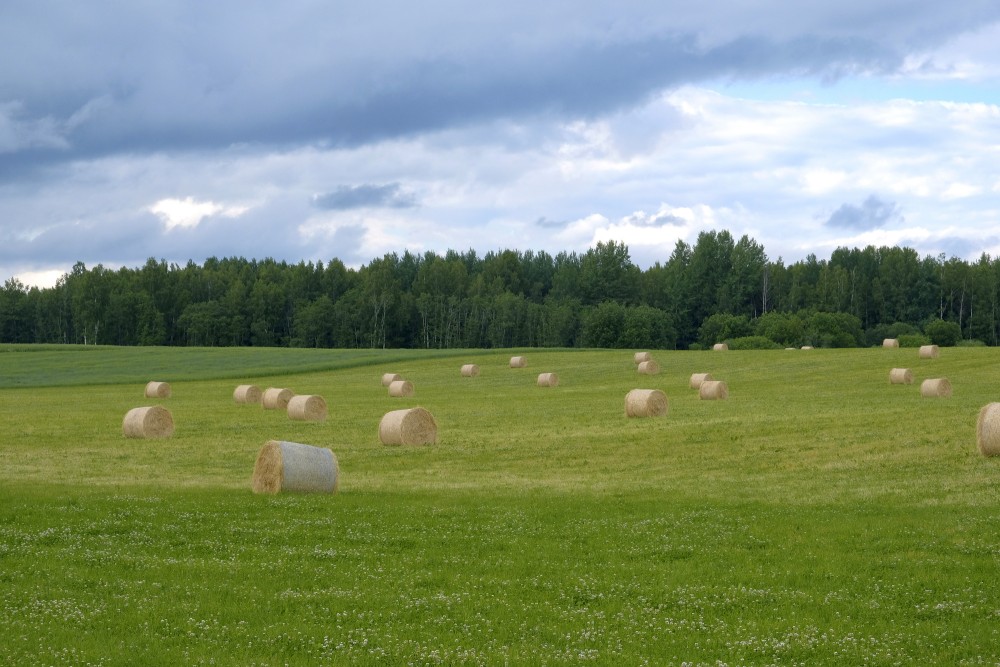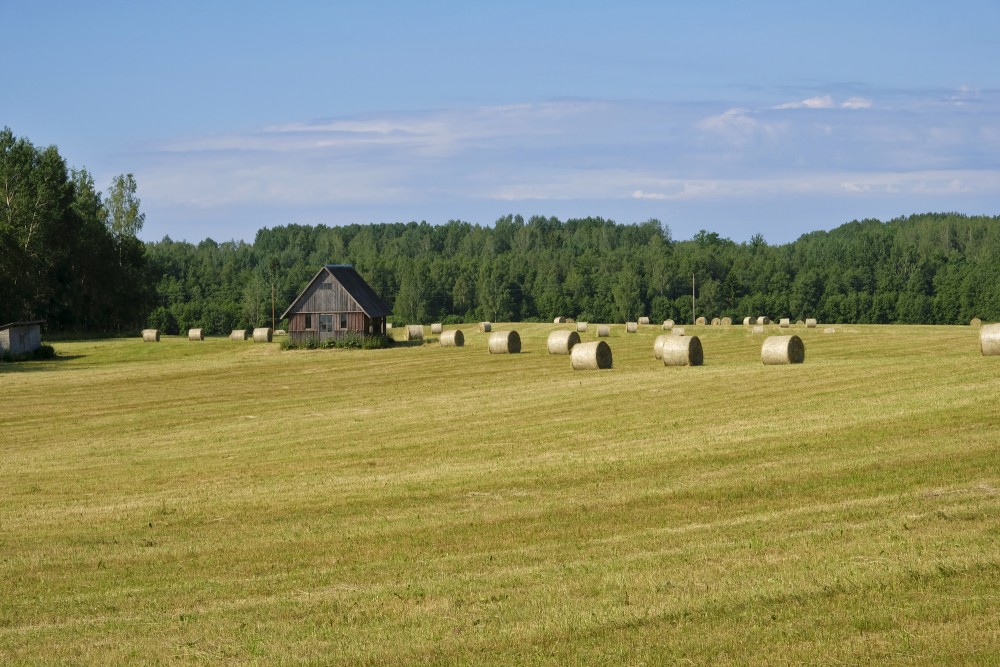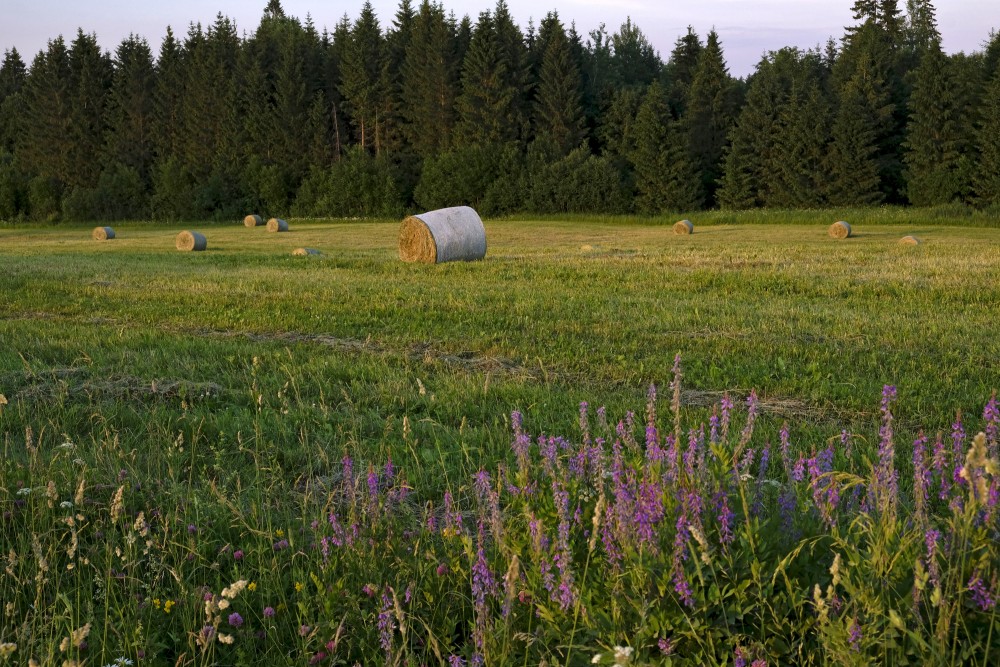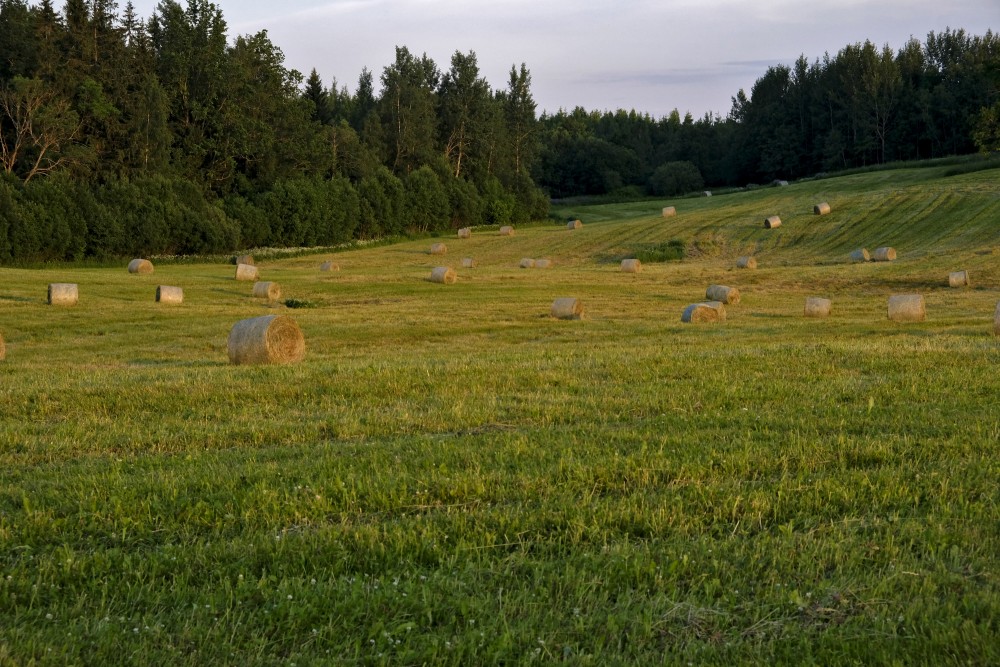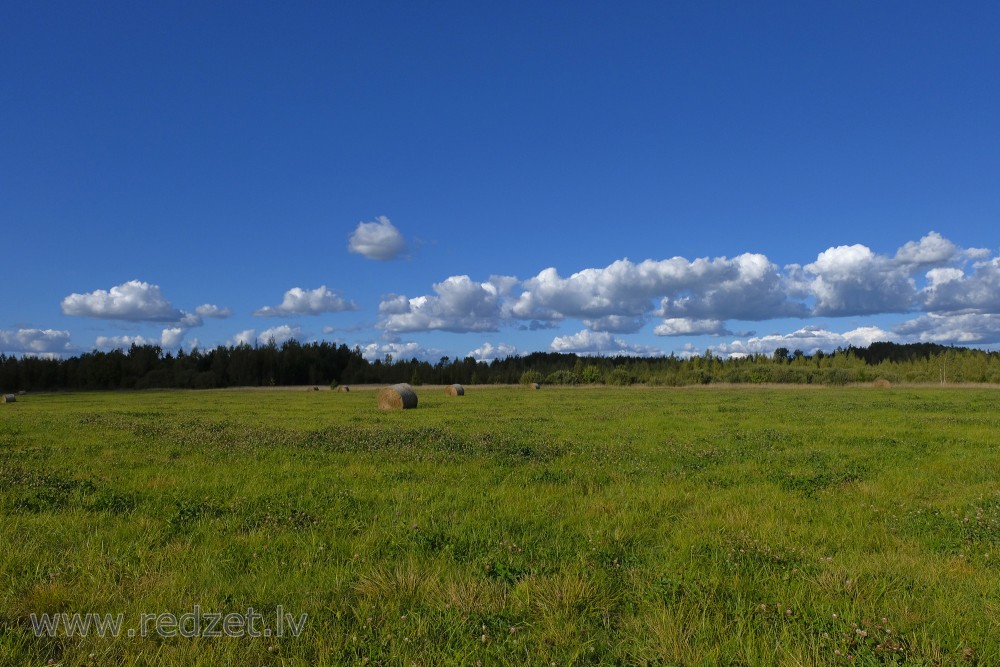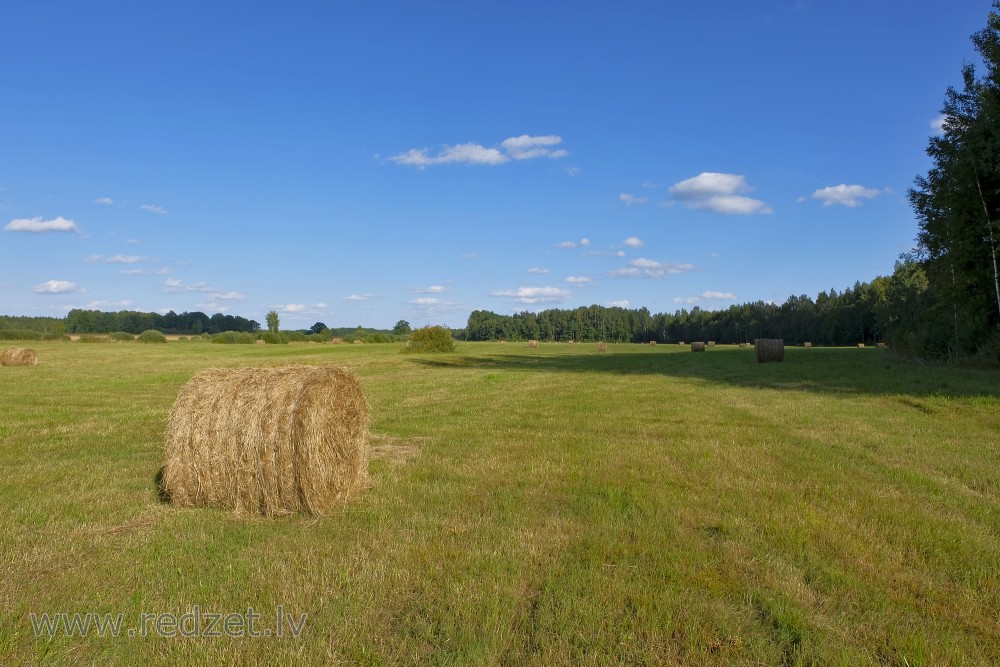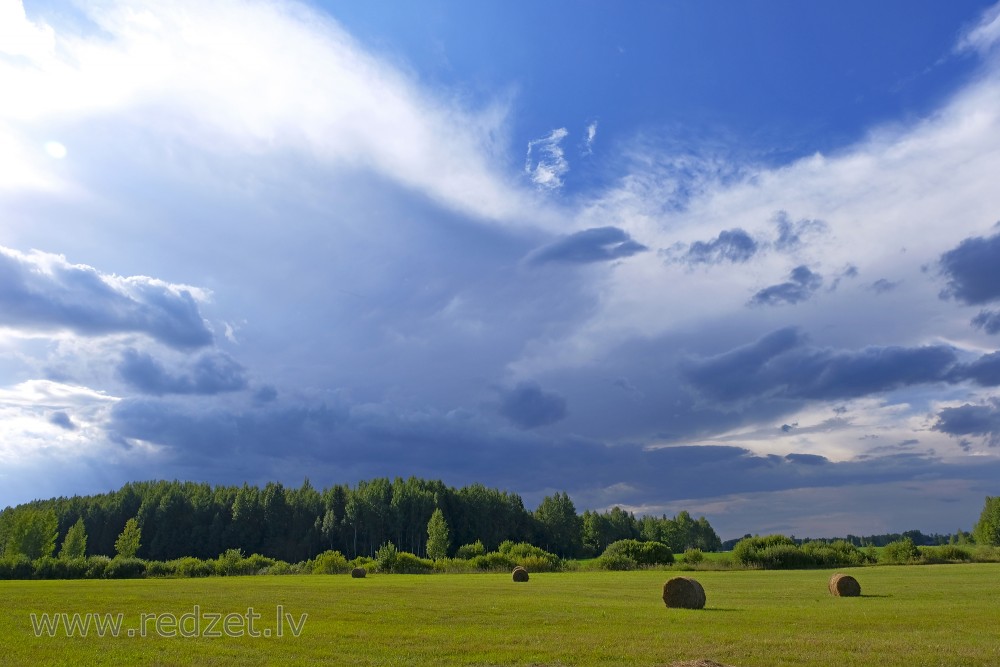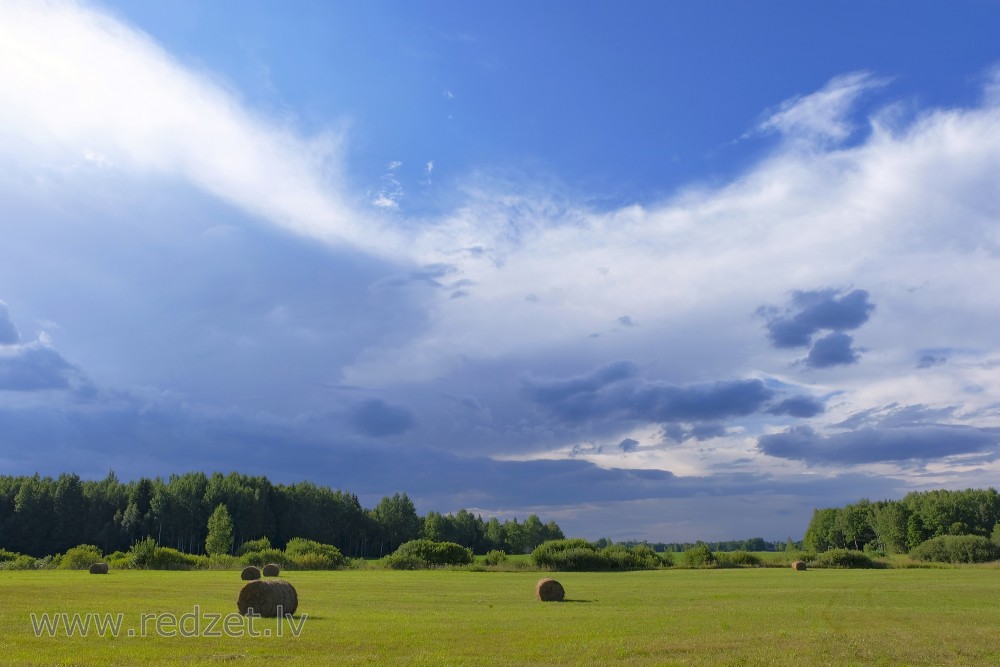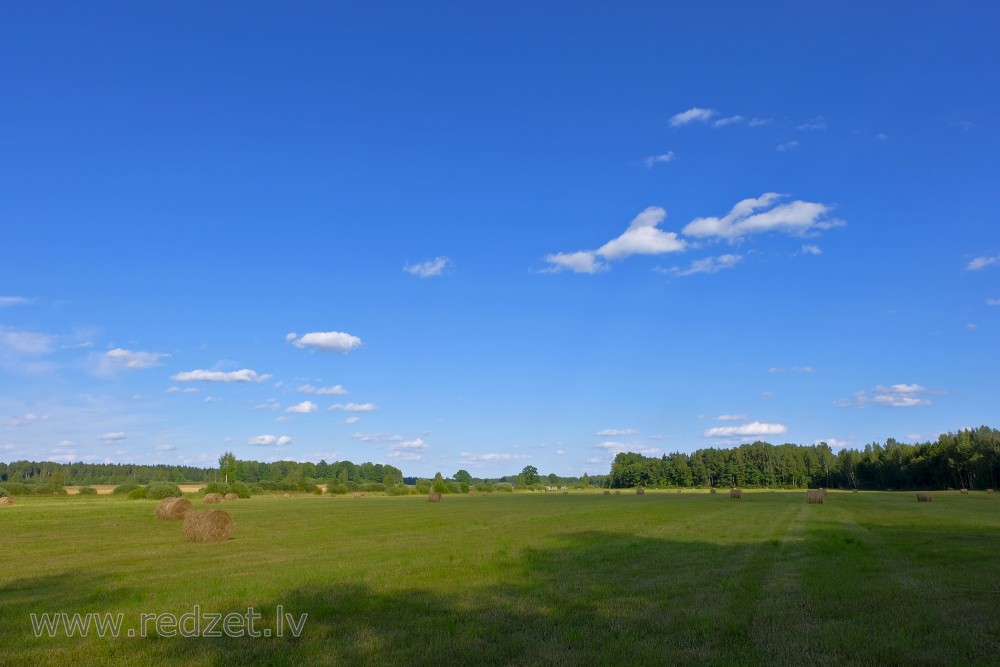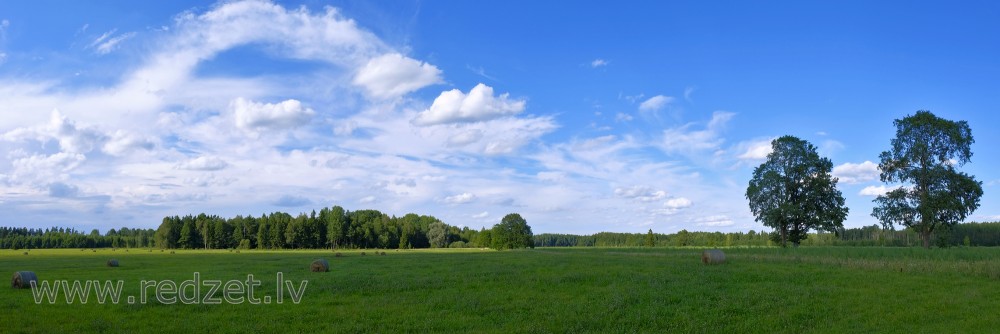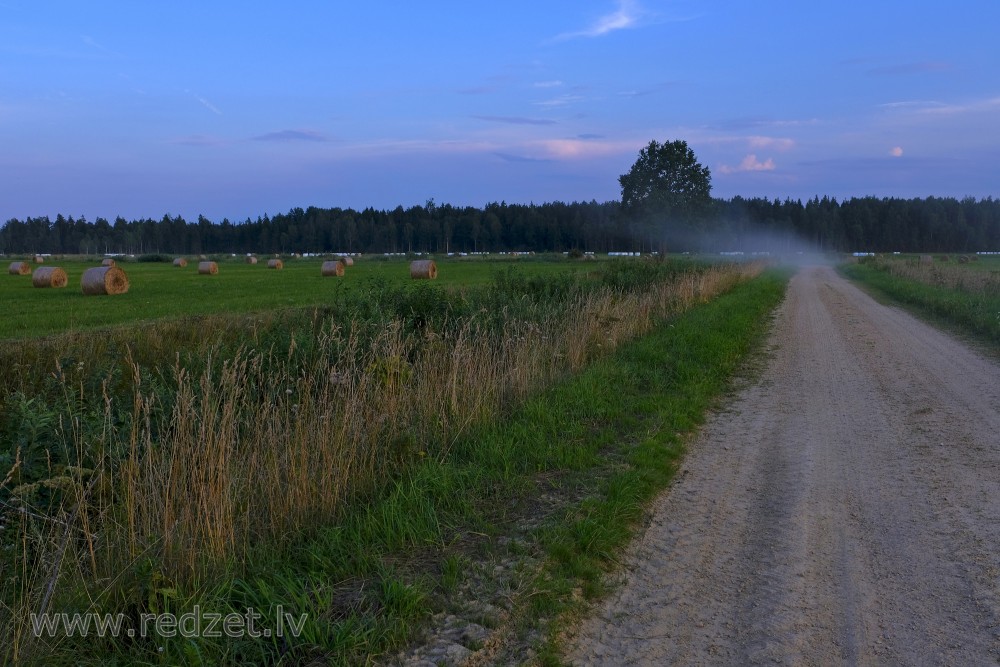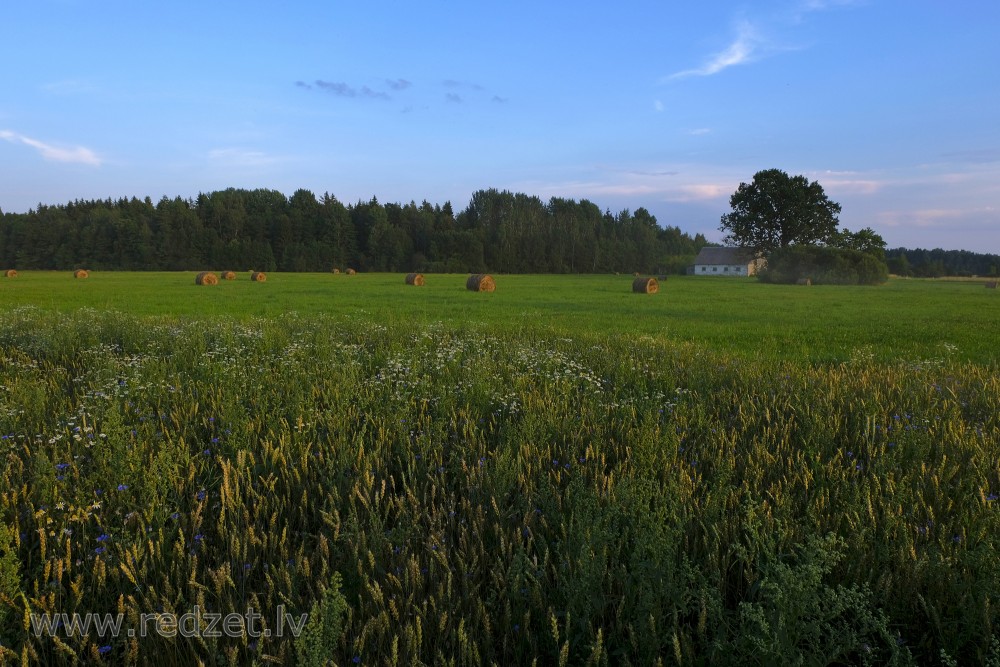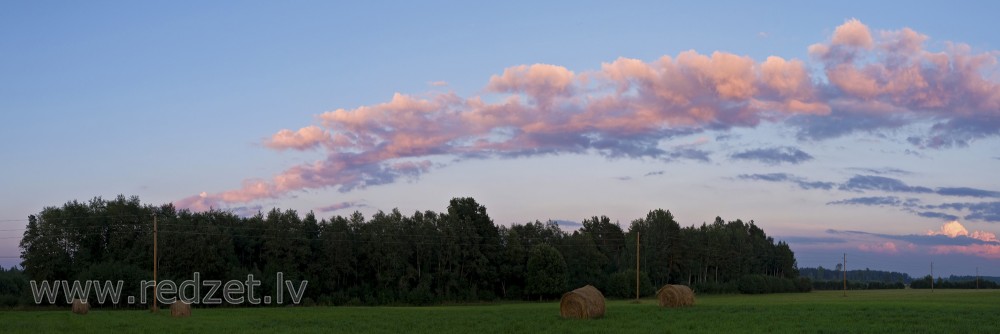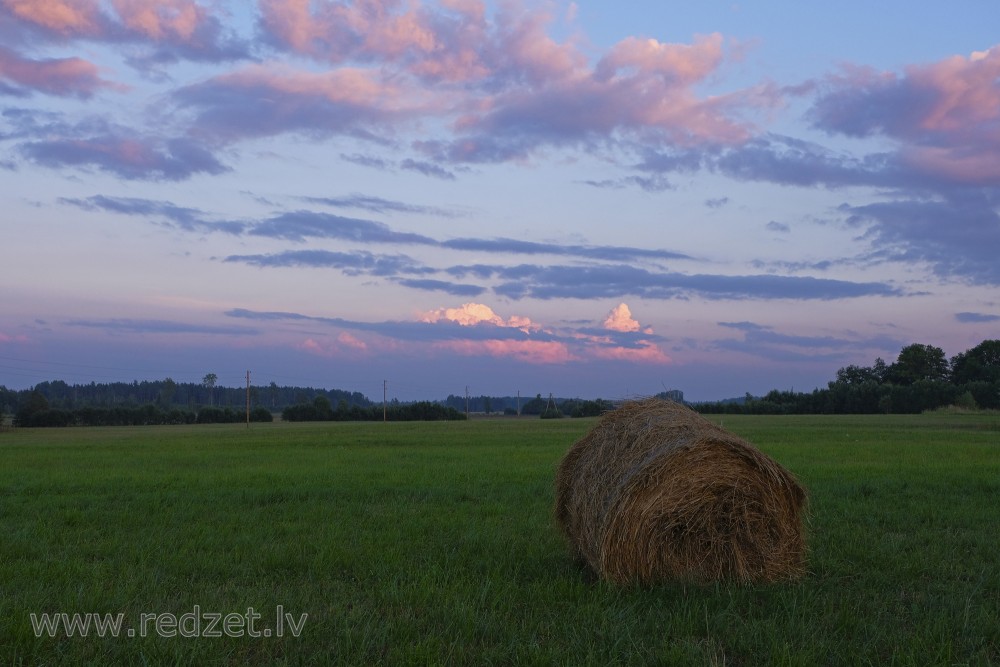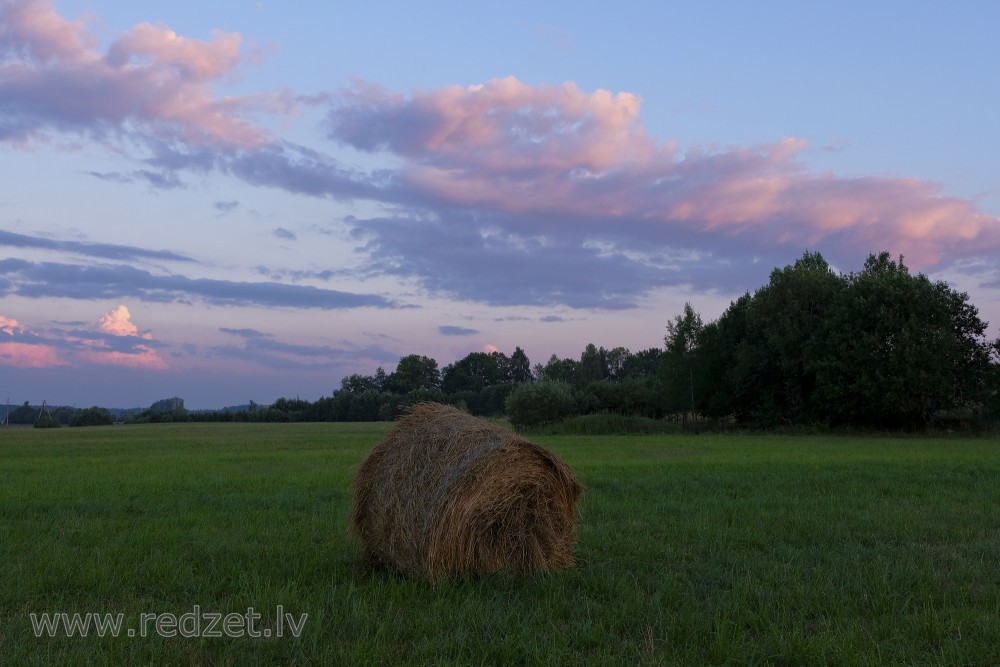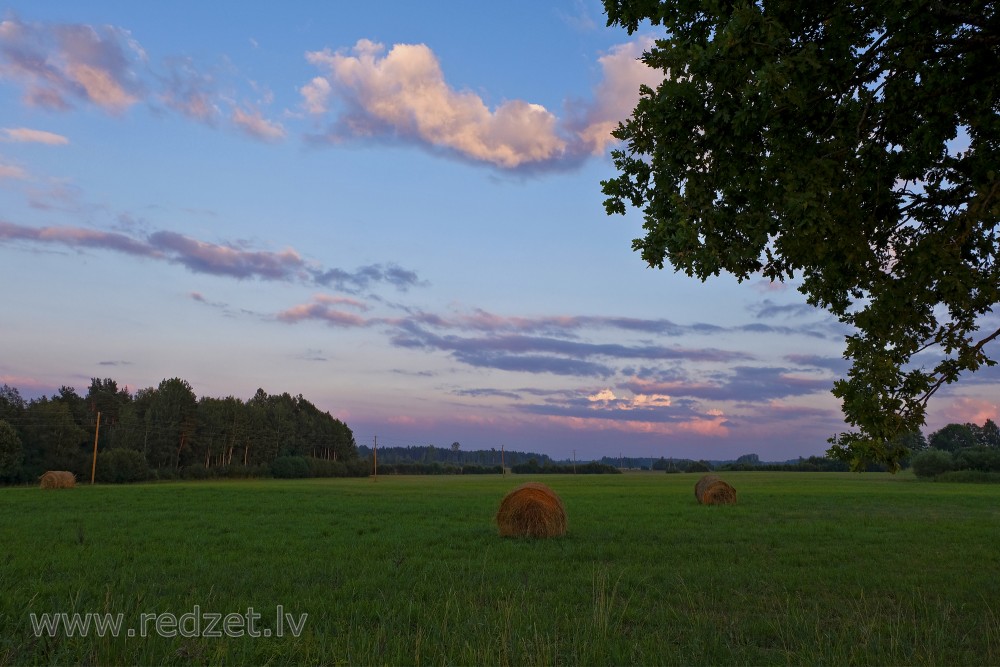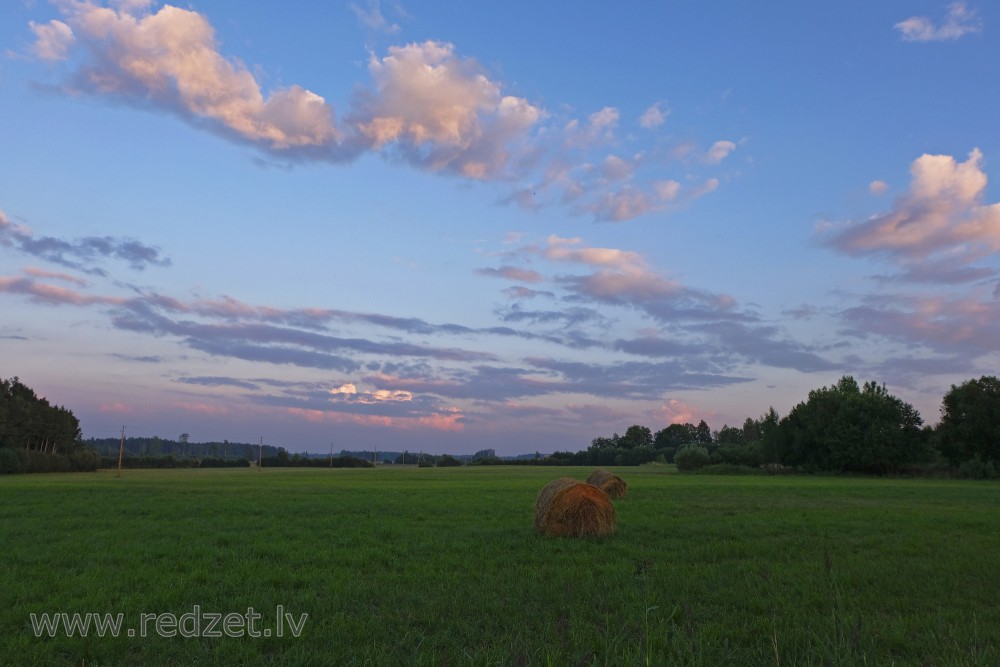Hay rolls
Hay is grass, legumes, or other herbaceous plants that have been cut, dried, and stored for use as animal fodder, particularly for grazing animals such as cattle, horses, goats, and sheep. Hay is also fed to smaller animals such as rabbits and guinea pigs. Pigs may be fed hay, but they do not digest it as efficiently as fully herbivorous animals.
Hay can be used as animal fodder when or where there is not enough pasture or rangeland on which to graze an animal, when grazing is unavailable due to weather (such as during the winter) or when lush pasture by itself is too rich for the health of the animal. It is also fed during times when an animal is unable to access pasture, such as when animals are kept in a stable or barn.
Composition
Commonly used plants for hay include mixtures of grasses such as ryegrass (Lolium species), timothy, brome, fescue, Bermuda grass, orchard grass, and other species, depending on region. Hay may also include legumes, such as alfalfa (lucerne) and clovers (red, white and subterranean). Legumes in hay are ideally cut pre-bloom. Other pasture forbs are also sometimes a part of the mix, though these plants are not necessarily desired as certain forbs are toxic to some animals.
Oat, barley, and wheat plant materials are occasionally cut green and made into hay for animal fodder; however they are more usually used in the form of straw, a harvest byproduct where the stems and dead leaves are baled after the grain has been harvested and threshed. Straw is used mainly for animal bedding. Although straw is also used as fodder, particularly as a source of dietary fiber, it has lower nutritional value than hay.
It is the leaf and seed material in the hay that determines its quality. Farmers try to harvest hay at the point when the seed heads are not quite ripe and the leaf is at its maximum when the grass is mowed in the field. The cut material is allowed to dry so that the bulk of the moisture is removed but the leafy material is still robust enough to be picked up from the ground by machinery and processed into storage in bales, stacks or pits.
Hay is very sensitive to weather conditions, especially when it is harvested. In drought conditions, both seed and leaf production are stunted, making hay that has a high ratio of dry coarse stems that have very low nutritional values. If the weather is too wet, the cut hay may spoil in the field before it can be baled. Thus the biggest challenge and risk for farmers in producing hay crops is the weather, especially the weather of the particular few weeks when the plants are at the best age/maturity for hay. A lucky break in the weather often moves the haymaking tasks (such as mowing, tedding, and baling) to the top priority on the farm's to-do list. This is reflected in the idiom to make hay while the sun shines. Hay that was too wet at cutting may develop rot and mold after being baled, creating the potential for toxins to form in the feed, which could make the animals sick.
After harvest, hay also has to be stored in a manner to prevent it from getting wet. Mold and spoilage reduce nutritional value and may cause illness in animals. A symbiotic fungus in fescue may cause illness in horses and cattle.
Modern mechanized techniques
Modern mechanized hay production today is usually performed by a number of machines. While small operations use a tractor to pull various implements for mowing and raking, larger operations use specialized machines such as a mower or a swather, which are designed to cut the hay and arrange it into a windrow in one step. Balers are usually pulled by a tractor, with larger balers requiring more powerful tractors.
Mobile balers, machines which gather and bale hay in one process, were first developed around 1940. The first balers produced rectangular bales small enough for a person to lift, usually between 70 and 100 pounds (32 and 45 kg) each. The size and shape made it possible for people to pick bales up, stack them on a vehicle for transport to a storage area, then build a haystack by hand. However, to save labor and increase safety, loaders and stackers were also developed to mechanise the transport of small bales from the field to the haystack. Later in the 20th century, balers were developed capable of producing large bales that weigh up to 3,000 pounds (1,400 kg).
Conditioning of hay has become popular. The basic idea is that it decreases drying time, particularly in humid climates or if rain interferes with haying. Usually, a salt solution is sprayed over the top of the hay (generally alfalfa) that helps to dry the hay. Conditioning can also refer to the rollers inside a swather that crimps the alfalfa to help squeeze out the moisture.
Baling
Small bales
Small bales are still produced today. While balers for small bales are still manufactured, as well as loaders and stackers, there are some farms that still use equipment manufactured over 50 years ago, kept in good repair. The small bale remains part of overall ranch lore and tradition with "hay bucking" competitions still held for fun at many rodeos and county fairs.
Small square bales are stacked in a criss-crossed fashion sometimes called a "rick" or "hayrick". Rain tends to wash nutrition out of hay and can cause spoilage or mold. Hay in small square bales is particularly susceptible to this, and is therefore often stored in a hayshed or protected by tarpaulins. If this is not done, the top two layers of the stack are often lost to rot and mold, and if the stack is not arranged in a proper hayrick, moisture can seep even deeper into the stack. The rounded shape and tighter compaction of small (and large) round bales makes them less susceptible to spoilage, as the water is less likely to penetrate into the bale. The addition of net wrap, which is not used on square bales, offers even greater weather resistance.
People who keep small numbers of animals may prefer small bales that can be handled by one person without machinery. There is also a risk that hay bales may be moldy, or contain decaying carcasses of small creatures that were accidentally killed by baling equipment and swept up into the bale, which can produce toxins such as botulism. Both can be deadly to non-ruminant herbivores, such as horses, and when this occurs, the entire contaminated bale generally is thrown out, another reason some people continue to support the market for small bales.
Large bales
Farmers who need to make large amounts of hay are likely to choose balers which produce much larger bales, maximizing the amount of hay which is protected from the elements. Large bales come in two types, round and square. Large square bales, which can weigh up to 1,000 kilograms (2,200 lb), can be stacked and are easier to transport on trucks. Large round bales, which typically weigh 300 to 400 kilograms (660–880 lb), are more moisture-resistant, and pack the hay more densely (especially at the center). Round bales are quickly fed with the use of mechanized equipment.
The ratio of volume to surface area makes it possible for many dry-area farmers to leave large bales outside until they are consumed. Wet-area farmers and those in climates with heavy snowfall can stack round bales under a shed or tarp, but can also use a light but durable plastic wrap that partially encloses bales left outside. The wrap repels moisture, but leaves the ends of the bale exposed so that the hay itself can "breathe" and does not begin to ferment. However, when it is possible to store round bales under a shed, they last longer and less hay is lost to rot and moisture.
Haylage
For animals that eat silage, a bale wrapper may be used to seal a round bale completely and trigger the fermentation process. It is a technique used as a money-saving process by producers who do not have access to a silo, and for producing silage that is transported to other locations. However, a silo is still a preferred method for making silage. In very damp climates, it is a legitimate alternative to drying hay completely and when processed properly, the natural fermentation process prevents mold and rot. Round bale silage is also sometimes called "haylage", and is seen more commonly in Europe than in either the United States or Australia. However, hay stored in this fashion must remain completely sealed in plastic, as any holes or tears can stop the preservation properties of fermentation and lead to spoilage.
en.wikipedia.org
